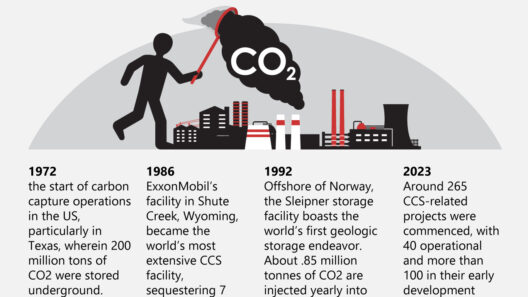Global warming, primarily induced by anthropogenic activities such as fossil fuel combustion, deforestation, and industrial processes, has far-reaching implications for living organisms and the biosphere as a whole. The significant increase in greenhouse gases, particularly carbon dioxide (CO2) and methane (CH4), has initiated a cascade of environmental alterations that challenge ecological balances. Understanding the multifaceted effects of global warming on life forms and ecosystems is imperative in crafting mitigation strategies and fostering resilience.
One of the most immediate consequences of global warming is the alteration of temperature regimes across various habitats. As terrestrial and aquatic ecosystems experience shifting temperature averages, species composition and interactions are profoundly affected. Many organisms possess specific thermal tolerances that dictate their survival and reproduction. For instance, coral reef ecosystems, which are highly sensitive to temperature fluctuations, exhibit coral bleaching when sea temperatures exceed thresholds. This phenomenon not only threatens the corals themselves but jeopardizes the myriad of species that depend on these biodiverse habitats.
In addition to thermal stresses, changes in precipitation patterns resulting from global warming further exacerbate ecological strains. Some regions may experience intensified droughts, while others may become deluged with excessive rainfall. Such climatic extremes influence habitat availability and can lead to the migration of species in search of more favorable conditions. Terrestrial mammals, for example, may be compelled to traverse greater distances to find food and suitable shelters, disrupting established migratory patterns and ecological niches.
A changing climate also engenders alterations in phenological events—the timing of seasonal biological phenomena. These shifts can have profound implications on the interactions between species. For example, if a plant species blooms earlier due to warmer temperatures, it may no longer coincide with the life cycle of its pollinators. Such desynchronization can result in reduced reproductive success for both plants and animals, potentially leading to population declines and even extinction in severe cases.
The effects of global warming are not limited to terrestrial and freshwater ecosystems; marine environments are equally vulnerable. Ocean acidification, a direct consequence of increased CO2 levels, poses a significant threat to calcifying organisms such as mollusks and some plankton species. As CO2 dissolves in seawater, it forms carbonic acid, which in turn lowers the pH of the ocean. Many marine species depend on stable pH levels for the development of shells and skeletons; thus, the ongoing acidification jeopardizes their survival and the food web dynamics they underpin.
Furthermore, global warming amplifies the risk of extreme weather events, including hurricanes, heatwaves, and wildfires. These phenomena can decimate entire ecosystems, leading to habitat loss and fragmentation. For example, forest fires, exacerbated by prolonged droughts and higher temperatures, not only destroy the flora but also significantly disrupt wildlife populations that rely on these habitats for sustenance and shelter. The cascading effects of habitat destruction further extend to the nutrient cycling processes and energy flow within ecosystems.
Global warming has also introduced new challenges to food security and human health. Shifting climatic zones can render certain agricultural regions less viable for traditional crops, while facilitating the encroachment of invasive species that threaten local biodiversity. Moreover, as species distributions shift, zoonotic diseases—those that jump from animals to humans—may become more prevalent, posing serious public health risks. The interplay between climate change and human activity underscores the necessity for comprehensive conservation strategies that encompass both environmental protection and public health measures.
The biosphere’s resilience against these myriad threats hinges on the preservation of biodiversity. Genetic diversity within species fosters adaptive responses to changing environmental conditions, enhancing survival prospects. However, global warming exacerbates habitat loss and fragmentation, leading to decreased genetic diversity and increased extinction risks. Conserving habitats and implementing sustainable land-use practices are essential to mitigating these risks and supporting adaptive landscapes that enable species to thrive amidst climatic upheavals.
The influence of global warming extends beyond the immediate ecological consequences; it challenges the fundamental interconnections that bind all life forms. Ecosystem services, such as pollination, water filtration, and carbon sequestration, underpin human welfare and the functionality of the biosphere. Disruptions to these services—whether through species extinctions or habitat degradation—could impede humanity’s ability to adapt and thrive in a warming world.
In conclusion, the implications of global warming are vast and varied, impacting the intricate tapestry of life within the biosphere. As temperature increases alter habitats, shift species interactions, and exacerbate extreme weather events, the necessity for immediate and collaborative action becomes paramount. Comprehensive policies that address carbon emissions, habitat conservation, and sustainable resource management are crucial in confronting the climate crisis. Only through a united front can we hope to safeguard biodiversity and ensure the resilience of ecosystems crucial for the continuing sustainability of life on Earth.







